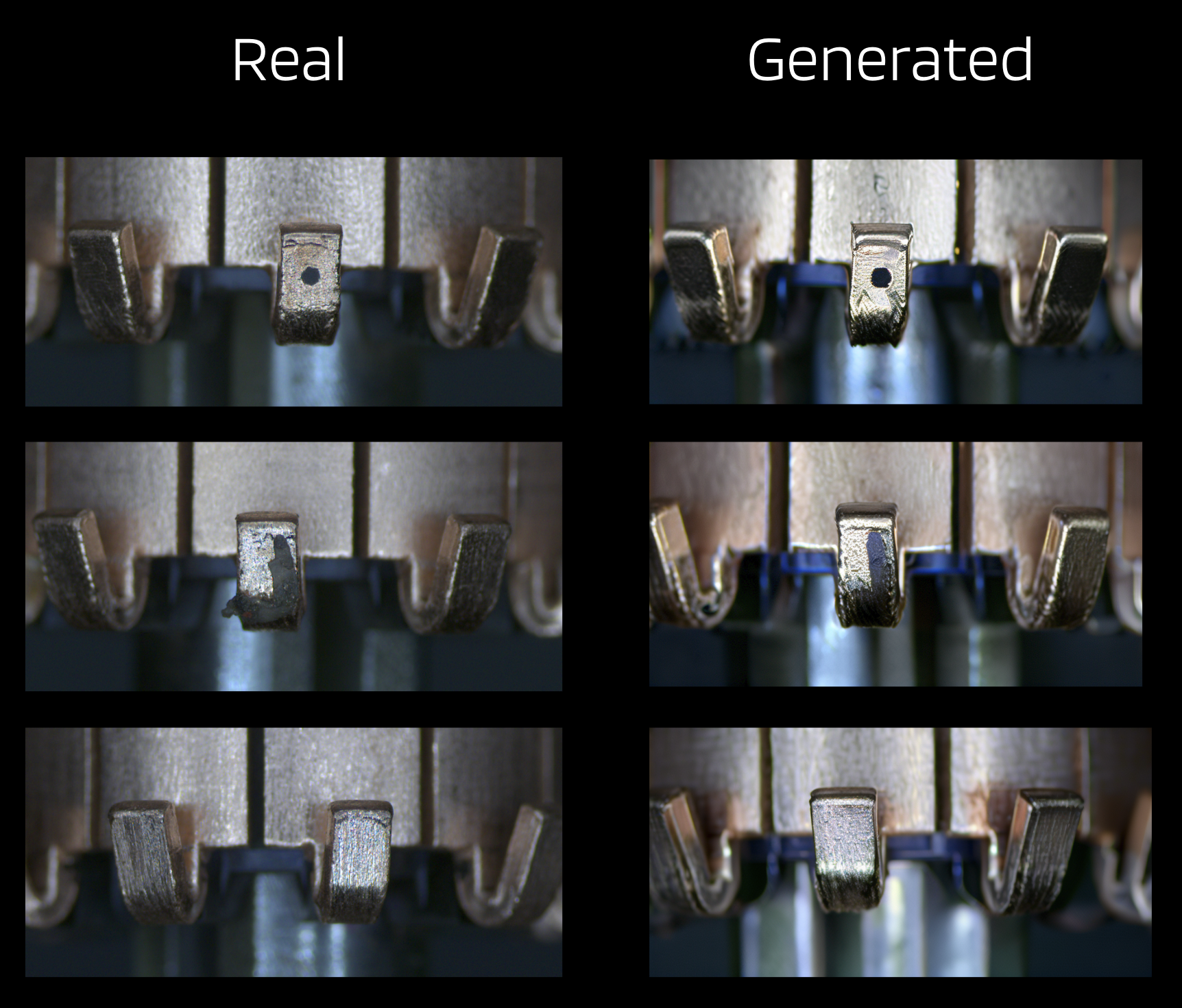Synthetic Data Unlocks New Possibilities for Machine Vision

Synthetic data is revolutionizing industrial machine vision by solving critical challenges. You can now overcome data scarcity and reduce labor-intensive processes. For instance, manufacturing industries report a 58% increase in efficiency over a decade. Synthetic Data in Industrial Machine Vision enables precise defect detection, infinite training images, and real-time adaptability for quality control systems.
What is Synthetic Data in Industrial Machine Vision?
Definition and Key Features
Synthetic data in industrial machine vision refers to artificially generated datasets that closely mimic real-world data. Advanced Generative AI techniques create this data, ensuring it shares similar structures and characteristics with actual datasets. Unlike traditional data, synthetic data offers a cost-effective and scalable solution for training machine vision models. It eliminates the need for expensive data collection processes and mitigates privacy concerns associated with real-world data.
Key features set synthetic data apart from its real-world counterpart:
Cost-effective compared to traditional data collection methods.
Scalable to meet the demands of any project.
Addresses privacy concerns by avoiding the use of sensitive real-world data.
Automates data generation and labeling, saving time and resources.
Synthetic data, particularly for surface defects, has become increasingly mature and is now effectively used in AI model training and inline inspection deployment. Advancements in domain adaptation and transfer learning have significantly reduced the domain gap, enabling models trained on synthetic data to perform reliably in real-world applications.
Role in Training Machine Vision Models
Synthetic data plays a transformative role in training machine vision models. It provides a diverse range of scenarios and edge cases that are difficult to capture in real-world settings. This diversity enhances the robustness of machine vision systems, enabling them to perform well under varying conditions.
The benefits of synthetic data in training machine vision models include:
Benefit | Description |
|---|---|
Cost-efficiency | Eliminates the need for expensive equipment and human annotators. |
Diversity | Simulates varied scenarios and rare edge cases. |
Privacy | Reduces risks associated with sensitive real-world data. |
Scalability | Adjusts easily to meet evolving project requirements. |
Precision | Provides highly accurate and detailed annotations for better model output. |
By leveraging synthetic data in industrial machine vision, you can accelerate model development and reduce dependency on labor-intensive data collection processes. This approach ensures that your machine vision systems are both cost-effective and high-performing.
Challenges in Traditional Machine Vision
Data Scarcity and Its Impact on Model Training
Data scarcity poses significant challenges for traditional machine vision systems. You often encounter limited access to rare objects or scenarios, which restricts the diversity of your training datasets. Privacy concerns further complicate the use of real-world data, especially in industries handling sensitive information. Collecting and labeling data manually is not only expensive but also time-consuming, making it difficult to scale your projects efficiently.
The consequences of insufficient data can be severe. Models trained on outdated datasets may fail to generalize to current conditions, leading to poor performance. Bias accumulation is another critical issue. When biases in the training data go unchecked, they can result in increasingly skewed outcomes over time.
Consequence | Explanation |
|---|---|
Models may not generalize well if trained on data that does not reflect current conditions. | |
Bias Accumulation | Unmonitored biases can accumulate, leading to increasingly biased outcomes over time. |
Additionally, data drift occurs when static datasets no longer align with real-world changes. This misalignment can degrade the accuracy of your machine vision models. Synthetic data offers a solution by introducing diversity and adaptability, helping you address these challenges effectively.
Time and Labor Intensity in Data Collection and Labeling
Traditional machine vision systems demand extensive time and labor for data collection and annotation. You need to gather large volumes of images, often requiring specialized equipment and skilled personnel. Manual annotation processes add another layer of complexity, as they involve labeling each image with precision. This process is not only tedious but also prone to human error, which can compromise the quality of your training data.
Note: High costs and time constraints in traditional data collection can delay project timelines and limit innovation.
The labor-intensive nature of these tasks makes it difficult to keep up with the growing demands of modern machine vision applications. Synthetic data eliminates these bottlenecks by automating data generation and labeling, allowing you to focus on developing robust and efficient models.
Benefits of Synthetic Data

Scalability and Cost-Effectiveness
Synthetic data offers unmatched scalability and cost-effectiveness for industrial machine vision. You can generate vast amounts of data without the need for expensive equipment or manual labor. This flexibility allows you to meet the demands of any project, whether it involves object detection or quality inspection.
Key cost benefits include:
Reduced expenses for data collection and storage, which is especially beneficial for smaller organizations.
Easier storage and manipulation, saving on hardware and software costs.
Cost Factor | Traditional Data | Synthetic Data |
|---|---|---|
Data Collection | High | Low |
Storage | Expensive | Cost-effective |
Processing | Time-consuming | Efficient |
Scalability is another major advantage. Synthetic data mitigates privacy concerns, creates diverse scenarios, and accelerates AI development. These features enable you to deploy machine vision models faster and adapt to evolving requirements.
Enhanced Model Performance with Synthetic Training Data
Synthetic training data enhances the performance of machine vision models by providing high-quality training data in large quantities. You can simulate environments with high variability, ensuring your models excel in object detection and quality control tasks. This approach is particularly effective in production settings, where synthetic data supports quality gates and improves detection accuracy.
Combining synthetic training data with small amounts of real data (5%–10%) significantly boosts model performance. This hybrid approach ensures your models achieve robust results while reducing dependency on extensive real-world datasets.
Automatic Labeling and Controlled Variations
Automatic labeling in synthetic data eliminates the challenges of manual annotation. You no longer need to rely on time-consuming and error-prone processes. Automated labeling accelerates data preparation, improves accuracy, and reduces costs. This efficiency allows you to focus on refining your machine vision models rather than spending resources on data annotation.
Controlled variations in synthetic data generation further enhance its utility. You can create datasets tailored to specific object detection or quality inspection tasks. This precision ensures your models are trained on scenarios that closely match real-world conditions, improving their adaptability and reliability.
Tip: By leveraging automatic labeling and controlled variations, you can streamline your AI development pipeline and achieve faster deployment of machine vision systems.
Real-World Applications of Synthetic Data in Industrial Machine Vision
Defect Inspection in Manufacturing
Synthetic data has transformed defect inspection processes across the manufacturing industry. You can now train machine vision models to detect flaws with unmatched precision. This approach is widely adopted in several sectors:
Automotive Industry: Synthetic data helps identify scratches, dents, and assembly defects in engine components, body panels, and electrical systems.
Pharmaceutical Packaging: AI systems trained on synthetic images detect cracks, sealing issues, and mislabeling in packaging, ensuring product safety.
Medical Devices: Synthetic datasets enhance defect detection in surgical tools and diagnostic devices, improving patient safety.
Electronics Manufacturing: Synthetic images assist in locating soldering issues and verifying the assembly of micro-components, such as printed circuit boards (PCBs).
By leveraging synthetic data, you can automate defect inspection, reduce reliance on manual checks, and improve overall production quality.
Quality Control Automation
Synthetic data plays a critical role in automating quality control processes in the manufacturing industry. Machine vision models require vast amounts of labeled data to achieve high accuracy. Synthetic data provides this at scale, addressing the limitations of traditional human inspection methods.
You can eliminate issues like fatigue and subjective judgment by training models with synthetic datasets. These models excel in identifying defects, ensuring consistent quality standards. For example, synthetic data enables automated systems to monitor production lines in real time, reducing errors and enhancing efficiency. This approach empowers you to maintain high-quality outputs while minimizing operational costs.
Tip: Incorporate synthetic data into your workflows to achieve faster, more accurate results in manufacturing processes.
How Synthetic Data is Transforming Industrial Machine Vision
Accelerating Deployment of Machine Vision Models
Synthetic data accelerates the deployment of machine vision models by addressing key challenges in traditional data collection. You can instantly generate hundreds or even thousands of realistic images using 3D models. This approach eliminates the need for costly and time-consuming manual data collection, allowing you to focus on refining your AI systems. By bridging data gaps in training sets, synthetic data ensures your models are equipped with diverse and unbiased datasets.
Key benefits of synthetic data in deployment include:
Enhancing model accuracy and efficiency.
Providing data variety to reduce bias.
Enabling the exploration of new AI concepts.
This innovative method also supports the development of more generalized AI models. For example, synthetic data allows you to simulate rare edge cases that are difficult to capture in real-world settings. This ensures your computer vision systems perform reliably across a wide range of scenarios. By leveraging synthetic data, you can deploy AI models faster and with greater confidence in their performance.
Adapting to Changing Conditions with Synthetic Data
Synthetic data empowers machine vision systems to adapt to dynamic industrial environments. You can create datasets that reflect diverse conditions, such as varying lighting, object placements, or environmental changes. This adaptability ensures your AI models remain robust even as real-world conditions evolve.
For instance, synthetic data enables the training of AI models to identify and track products on shelves in retail environments. These models can handle challenges like fluctuating lighting or rearranged product placements. Additionally, synthetic data minimizes data drift by continuously introducing diversity into training datasets. This prevents your models from becoming outdated and ensures they stay aligned with current conditions.
Other advantages include:
Cost-effective generation of diverse scenarios.
Automation of data labeling to save time and resources.
Scalability to meet the demands of any project.
By integrating synthetic data into your workflows, you can future-proof your AI systems and maintain their accuracy over time. This approach ensures your computer vision applications remain effective, regardless of changing industrial conditions.
Synthetic data is transforming the manufacturing industry by solving challenges like data scarcity and labor-intensive processes. It reduces costs, enhances machine learning model performance, and accelerates innovation cycles. Manufacturers increasingly rely on synthetic data to simulate production scenarios, optimize processes, and predict maintenance needs. Embrace synthetic data to stay competitive in this evolving industry.
See Also
An In-Depth Look at Machine Vision in Automation
Exploring Machine Vision Uses in Food Manufacturing
Enhancing Visual Inspection Skills Through AI Technology
The Impact of Generative AI on Manufacturing's Future
Perfecting Outer Diameter Scratch Checks with Machine Vision
